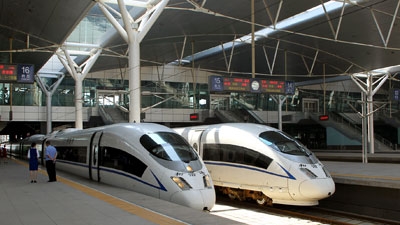BEIJING, January 21, 2013 - Wider economic development benefits of high speed rail projects are significant and are worth considering in the evaluation of such programs, in addition to traditionally measured direct transport benefits, suggests a new World Bank research paper released today.
According to the paper titled High-Speed Rail, Regional Economics, and Urban Development in China, there is an emerging consensus that major transport investments may have significant impacts that are not well captured through conventional cost-benefit analysis. Conventional economic evaluations of major transport infrastructure investments tend to focus on the direct costs and benefits arising from travel, including time savings for travelers, cost savings for operators, and reductions in aspects like air pollution, noise, and accidents.
In China, the high speed rail program is changing the dynamic of travel, with more people travelling by high speed rail than flying. The World Bank has supported both econometric studies and on-the-ground surveys that begin to identify and quantify these impacts in the context of the country’s emerging high speed rail program.
Based on this and other research, the Bank has begun to pilot a methodology to evaluate wider economic development benefits for several high speed rail projects, and has found them to be significant - of the same order as direct transport benefits. Crucially, these benefits of larger and better connected markets accrue to businesses and individuals even when they themselves do not travel as the flow of ideas and people accelerate. The paper highlights this research and methodology and some of the policy implications to maximize these benefits in practice.
Gerald Ollivier, World Bank’s Senior Transport Specialist working on the high speed rail program in China gave an example. "Look at the case of Zhengzhou on the 2,298 km Beijing to Guangzhou line opened on December 26,” he said. “In the past, in a three hour conventional train journey on this line, about three million people from Anyang, Xinxiang and Handan can reach Zhengzhou; today, with the opening of the new high speed line, this number will surge to 28 million people from eight cities. These cities will start to work more closely together as a return trip within a day will be within reach. The impact in terms of economic exchanges, accessibility, and productivity gains are expected to be significant, and extend beyond traditional transport savings. The scale and scope of the Chinese high speed rail program offer a unique opportunity to try to measure such impacts."
The paper is the eighth of a series of papers on transport topics produced by the World Bank in Beijing.

